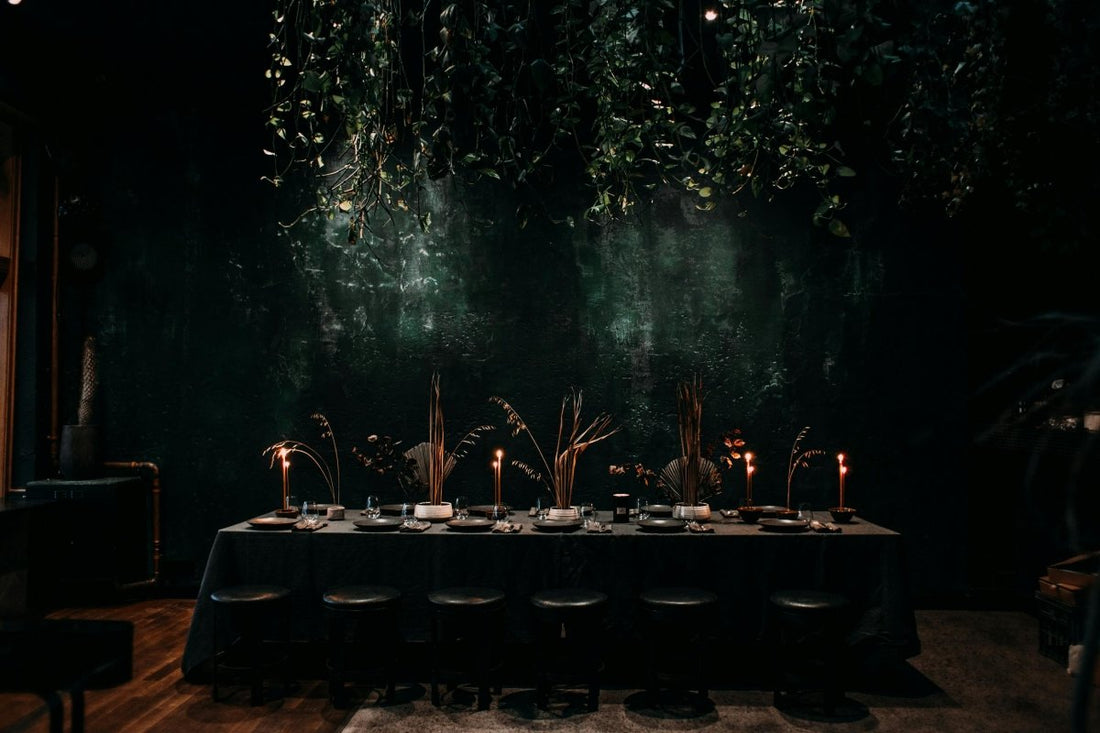
How to Make a Stunning Tablescape: A Step-by-Step Guide
Creating a beautiful tablescape can elevate any dining occasion, whether you're hosting a dinner party, celebrating a holiday, or simply enjoying a family meal. A well-designed tablescape sets the tone for the event and enhances the dining experience by making your table both visually appealing and functional. Here’s a step-by-step guide to help you create a stunning tablescape that will impress your guests.
Step 1: Start with a Solid Foundation
The first element to consider when building a tablescape is the table itself. The size and shape of your table will influence your design choices. For example, a long rectangular table may call for a more linear design, while a round table can be approached with a central focus.
-
Tablecloth, Runner, or Bare Wood?: The foundation can be a tablecloth, a table runner, or even just the table’s natural surface if it’s particularly beautiful. A tablecloth sets the stage for a more formal look, while a table runner gives a more relaxed yet stylish vibe.
-
Choose a Colour Palette: Opt for a colour palette that complements the season or the theme of your gathering. Classic choices include neutral tones like whites, creams, and greys, or rich tones like navy, gold, and burgundy. Don’t be afraid to mix textures and patterns for visual interest!
Step 2: Incorporate Plates and Chargers
Plates are the most important functional elements of your tablescape, but they can also contribute to its aesthetic. A well-chosen plate can elevate the entire table setting.
-
Chargers: Start with a charger plate (a larger decorative plate) underneath your dinner plates. This adds a sense of grandeur to the table and helps anchor the other elements. Choose chargers that contrast or complement the dinnerware.
-
Dinner Plates and Salad Plates: Select plates that suit the theme. Classic white porcelain works for almost any occasion, while patterned plates can add a bit of flair to the design. Make sure the dinner plate is the main focal point, with smaller salad or bread plates placed on top or beside.
Step 3: Add Glassware
No tablescape is complete without the right glassware. The type of glassware depends on the drinks you'll be serving.
-
Wine Glasses: If you're serving wine, choose red or white wine glasses that match the type of wine.
-
Water Glasses: Larger water glasses should be placed above the forks, next to the wine glasses. You can also add a decorative touch with a unique water glass design.
-
Other Drinkware: If you're serving cocktails or specialty drinks, consider adding an additional glass type, like tumblers or martini glasses. Just ensure they match the overall aesthetic and functionality of the table.
Step 4: Layer the Utensils
The arrangement of utensils not only aids in dining, but it’s also an opportunity to bring symmetry and order to your tablescape.
-
Forks, Knives, and Spoons: Place the utensils in the order they will be used, from the outside in. The fork should be on the left of the plate, the knife to the right with the blade facing inward, and the spoon to the right of the knife (if soup or dessert is being served). If you’re using multiple forks (e.g., for a formal three-course meal), place the outermost fork first.
-
Napkins: Napkins can be folded neatly and placed on top of the plates, or for a more whimsical touch, you can fold them creatively and place them in a napkin ring or wine glass. Linen napkins add texture and sophistication, while paper napkins can still offer a stylish and practical option.
Step 5: Create a Centre piece
The centre piece of your tablescape is where your creativity really shines. It should be the focal point, but you also want to make sure it doesn’t obstruct your guests' views across the table. Here are a few options:
-
Floral Arrangements: Fresh flowers are a classic choice. For an elegant touch, choose a low-profile arrangement so guests can converse across the table without obstruction. Seasonal flowers like tulips in spring or dahlias in fall can add beautiful color and fragrance to the table.
-
Candles: Adding candles creates a warm, inviting atmosphere. You can opt for pillar candles, taper candles in holders, or even floating candles in glass bowls. Consider mixing different heights for added depth and dimension.
-
Unique Touches: Depending on the occasion, a unique centerpiece could be a collection of decorative items such as seasonal fruit, a beautiful vase, or even a stack of books for an eclectic touch.
Step 6: Add Personal Details
The final touch in creating a memorable tablescape is adding personal elements that make the setting feel special and intimate.
-
Place Cards: Personalized place cards are a great way to add a touch of elegance and show your guests that you’ve thoughtfully prepared for them. You can handwrite names on small cards, tie them to a sprig of herbs, or even design mini menus.
-
Small Favors: Depending on the event, small guest favors (like little boxes of chocolates, scented candles, or mini succulents) can make the experience feel extra special. They can be placed at each seat or near the center of the table for a surprise touch.
-
Textural Elements: Think about using cloth napkins, placemats, or woven chargers to add visual texture and make your tablescape feel rich and inviting.
Step 7: Final Adjustments
Before you call it a day, step back and take a look at your tablescape from different angles. Does everything feel balanced? Are the items spaced evenly? Ensure that each seat has ample room to eat comfortably and that the centerpiece doesn’t block your guests’ view of each other.
Make sure there is enough space for serving dishes, water pitchers, or other communal items. Keep the table simple and not overcrowded—sometimes less is more when it comes to a clean and inviting tablescape.